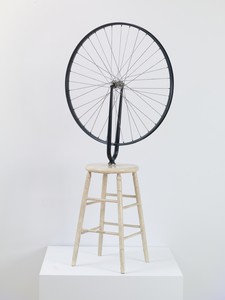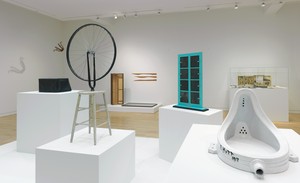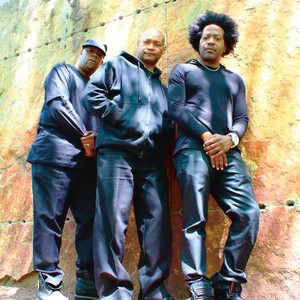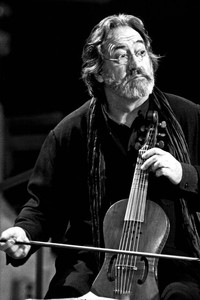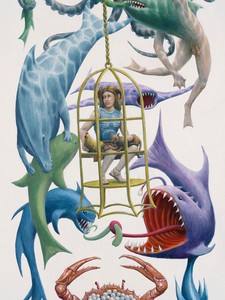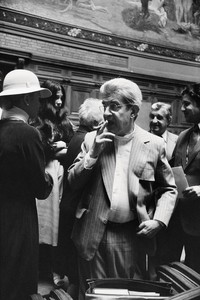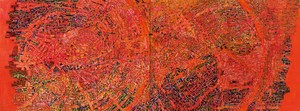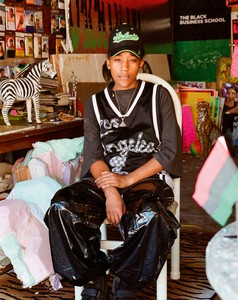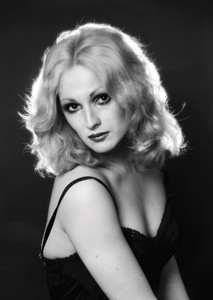Nearly two centuries ago, a German man by the name of Baron Karl von Drais invented the bicycle. Almost a century later, a Frenchman by the name of Marcel Duchamp created Bicycle Wheel, which would become a hallmark of the conceptual artist’s career. Today, 111 years after Duchamp first created—then lost, then recreated—the piece, Alexander Wolf examines the timeline.
1911
Duchamp paints Coffee Mill, a wedding gift for his brother, the sculptor Raymond Duchamp-Villon. “I made this old-fashioned coffee mill for him. It shows the different facets of the coffee grinding operation and the handle on top is seen simultaneously in several positions as it revolves.” 1
1912
Duchamp paints Bride and Nude Descending a Staircase (No. 2), imbuing classical subjects with mechanical motion. Nude is rejected by the Salon des Independents and ignites controversy at New York’s first Armory Show the following year. 2
1913
Duchamp attaches the front wheel and fork of a bicycle to the top of a kitchen stool. He later described the object “as a pleasure, something to have in my room the way you have a fire, or a pencil sharpener, except that there was no usefulness. It was a pleasant gadget, pleasant for the movement it gave.”3
1915
Sails to New York. Bicycle Wheel is lost when Duchamp’s sister Suzanne cleans out his Paris studio. 4
1916
Duchamp replicates Bicycle Wheel for his studio at 33 West 67th Street. 4
1951
Produces the next replica of Bicycle Wheel for the exhibition “Climax in 20th Century Art, 1913” at the Sidney Janis Gallery, using a wheel that Janis brought from Paris and a used stool purchased in Brooklyn. This third iteration is now in the collection of the Museum of Modern Art. 4
1960
In Stockholm, critic Ulf Linde and artist Per Olof Ultvedt are instructed by Duchamp to construct another replica, which is later inscribed by Duchamp: “pour copie conforme Marcel Duchamp Stockholm 1961”. 4
1963
In London, Richard Hamilton creates the final copie conforme of Bicycle Wheel before the production of the Schwarz edition. 4
1964
Under Duchamp’s supervision, Arturo Schwarz produces editions of fourteen readymades. The Schwarz edition of Bicycle Wheel is now included in the collections of the Philadelphia Museum of Art, the Israel Museum, and other leading institutions. 4
1965
The Schwarz edition of Bicycle Wheel is exhibited at Cordier & Ekstrom Gallery, then located at 978 Madison Avenue, together with over one hundred of Duchamp’s works, including readymades, paintings, and drawings. 5
2014
One of two artist’s proofs from the Schwarz edition is exhibited in Marcel Duchamp at Gagosian New York.
Even if Duchamp’s first readymade was so serendipitous, the unprecedented gesture was also years in the making. By 1911, the “Puteaux Cubists,” including Duchamp, Sonia and Robert Delaunay, Albert Gleizes, Fernand Leger, and Jean Metzinger, had devised alternative, multi-perspectival, and sometimes wholly abstract approaches to painting and sculpture.3 In the 1912 paintings Bride and Nude Descending a Staircase (No. 2), Duchamp merged classical subjects with mechanical motion; Nude was rejected by the Salon des Independents, and was a lightning rod of controversy at New York’s first Armory Show in 1913. In a letter to Constantin Brancusi that year, Duchamp declared painting “washed up,” adding “who will ever do anything better than the propeller?”7 With the spinning gadget that came to be known as Bicycle Wheel, he crystallized this point of view.
The subsequent “readymades”—including Bottle Dryer (Bottle Rack), Hat Rack, and Fountain—were increasingly derisive of conventional authorship. Duchamp began to explore the processes and implications of replicating “creative acts,” beginning with his construction of a second Bicycle Wheel upon arrival in New York in 1916. Two decades later, Boîte-en-valise (1935–41), a suitcase containing a “portable museum” of fold-out reproductions and miniatures of his most important works, epitomized his approach to his own oeuvre and history.

